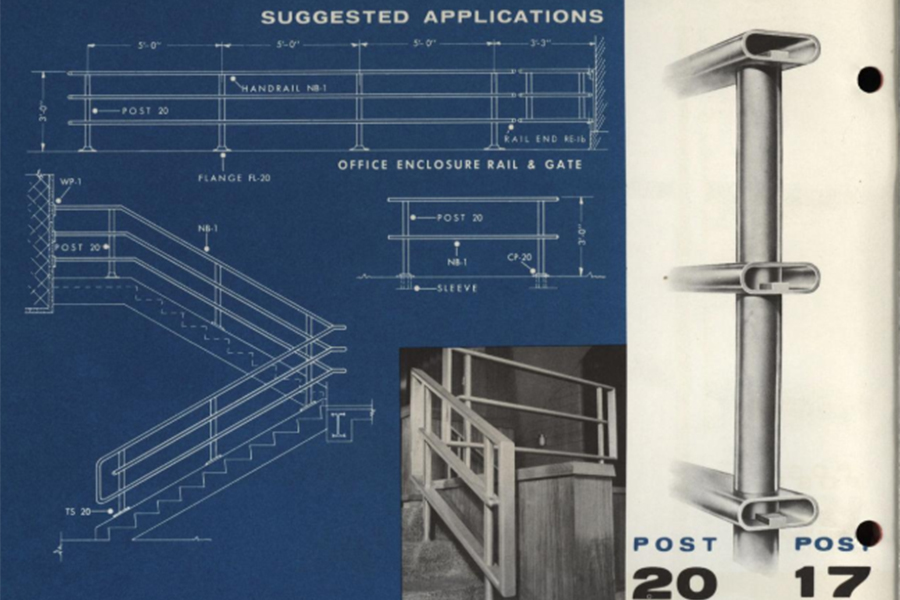This post is part of a monthly series that explores the historical applications of building materials and systems through resources from the Building Technology Heritage Library (BTHL), an online collection of AEC catalogs, brochures, trade publications, and more. The BTHL is a project of the Association for Preservation Technology, an international building preservation organization.
The humble railing—regardless of whether it is a handrail or a guardrail—provides an essential function for buildings of all typologies. Typically manufactured in metal or wood, railings also offered the opportunity for ornamentation through their design.
Here, the BTHL highlights examples of railing design through the 19th and 20th centuries.
A New Phase of Iron Manufacture, John B. Wickersham, New York, 1855
This mid-19th century catalog features cast and wrought iron railings “to suit all classes and different forms of architecture, from the lightest to the most massive designs.”
Hauts-fourneaux et Fonderies du Val D’Osne, Barbezat & Cie, Paris, 1866
This French catalog highlights hundreds of railing designs primarily for exterior balconies.
Palmer, Fuller & Co. Doors, Sash, Blinds, Chicago, 1889
This woodwork catalog features “new and improved styles and designs in stairs, stair railings, balusters and newel posts.” The stairs and railings were “ready made, marked and taken apart, so that any carpenter can set them up and finish the building.”
Builders’ Wire and Iron Work, E.T. Barnum, Detroit, 1895
The railing examples in this catalog include simple pipe railings as well as ornamental wrought iron.
General Catalog 1911-1912, Segelke & Kohlhaus Manufacturing Co., La Crosse, Wis., 1912
This woodwork catalog contains more than 35 pages of “high grade stair work,” including rails, newels, balusters, and crooks.
Ed. Delion Ferronier, Paris, 1926
This French metalwork catalog features Art Deco and Art Moderne designs that were popular in the 1930s.
Ornamental Iron Railings, Southern Ornamental Iron Works, Arlington, Texas, circa 1930s
This catalog highlights railing for residential architecture, primarily for installation on a porch or stair, or as a balcony or trellis.
Aluminum Extruded Econo-Rail Quality Railings, Newman Brothers, Cincinnati, 1940s
The use of aluminum for railings emerged in the 1930s. This catalog features distinctive modernist styles.
Braun Architectural Metals and Supplies, J.G. Braun Co., Chicago, 1954
This catalog features architectural metalwork for stairs and railings in steel, aluminum, and bronze.
